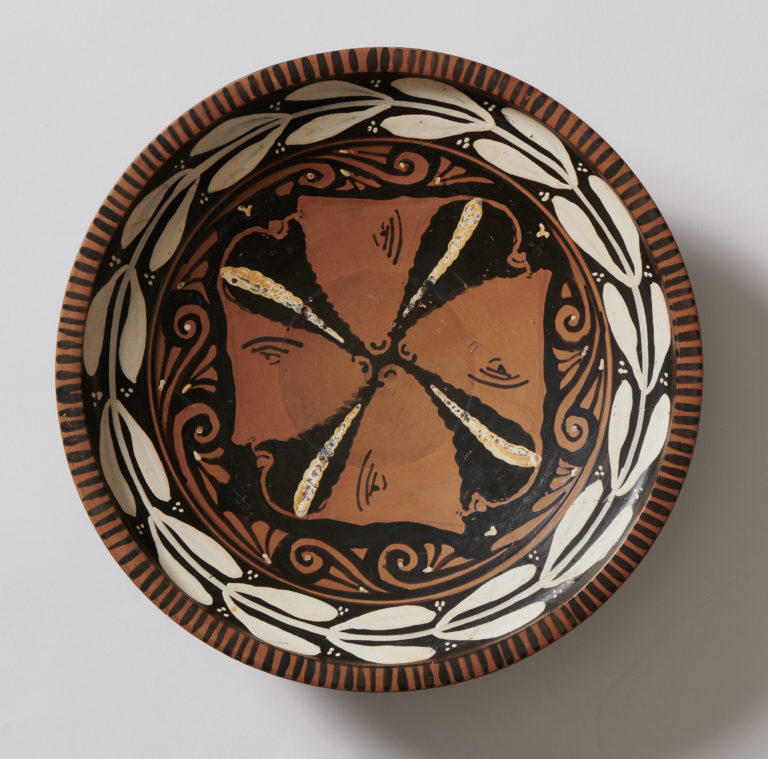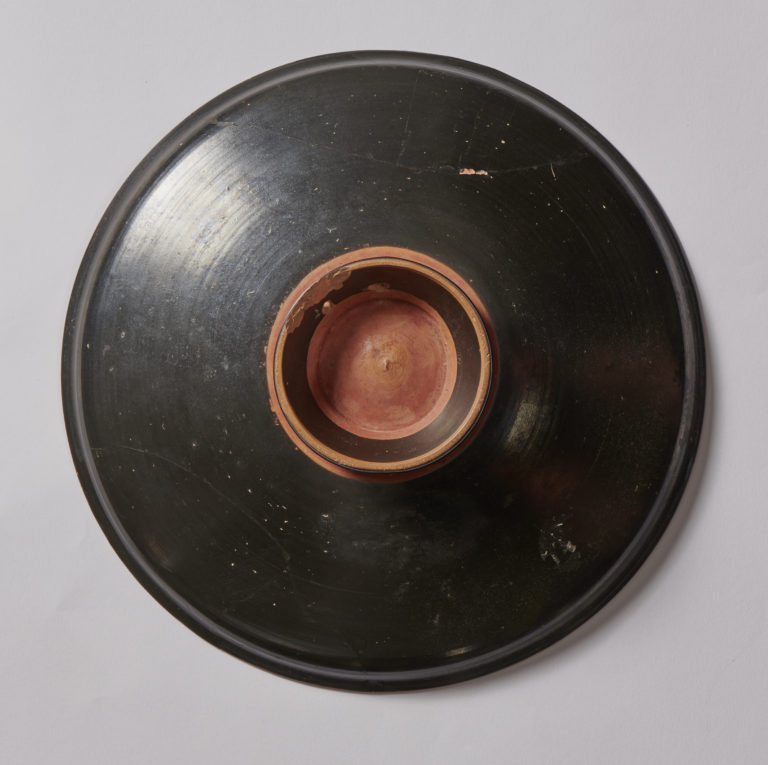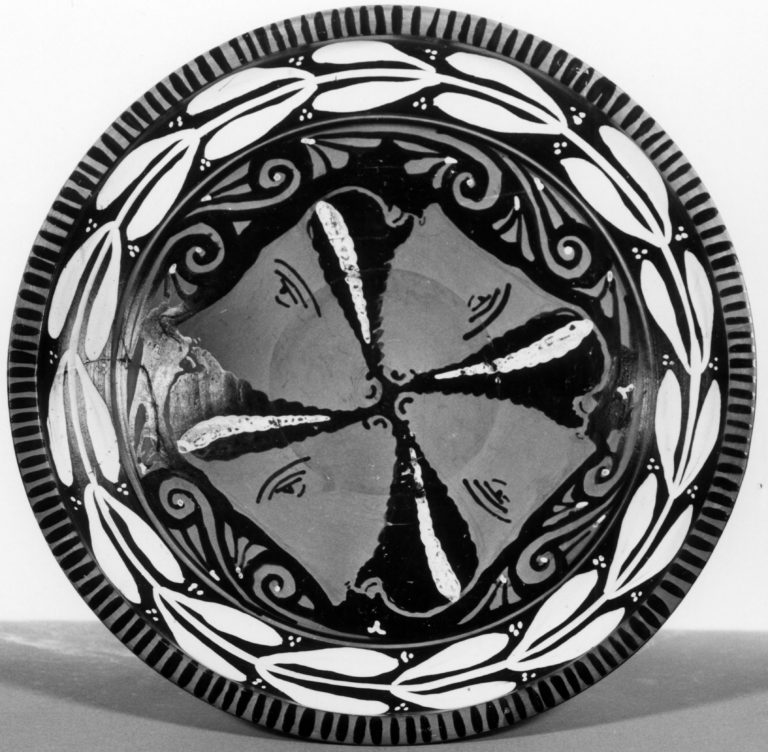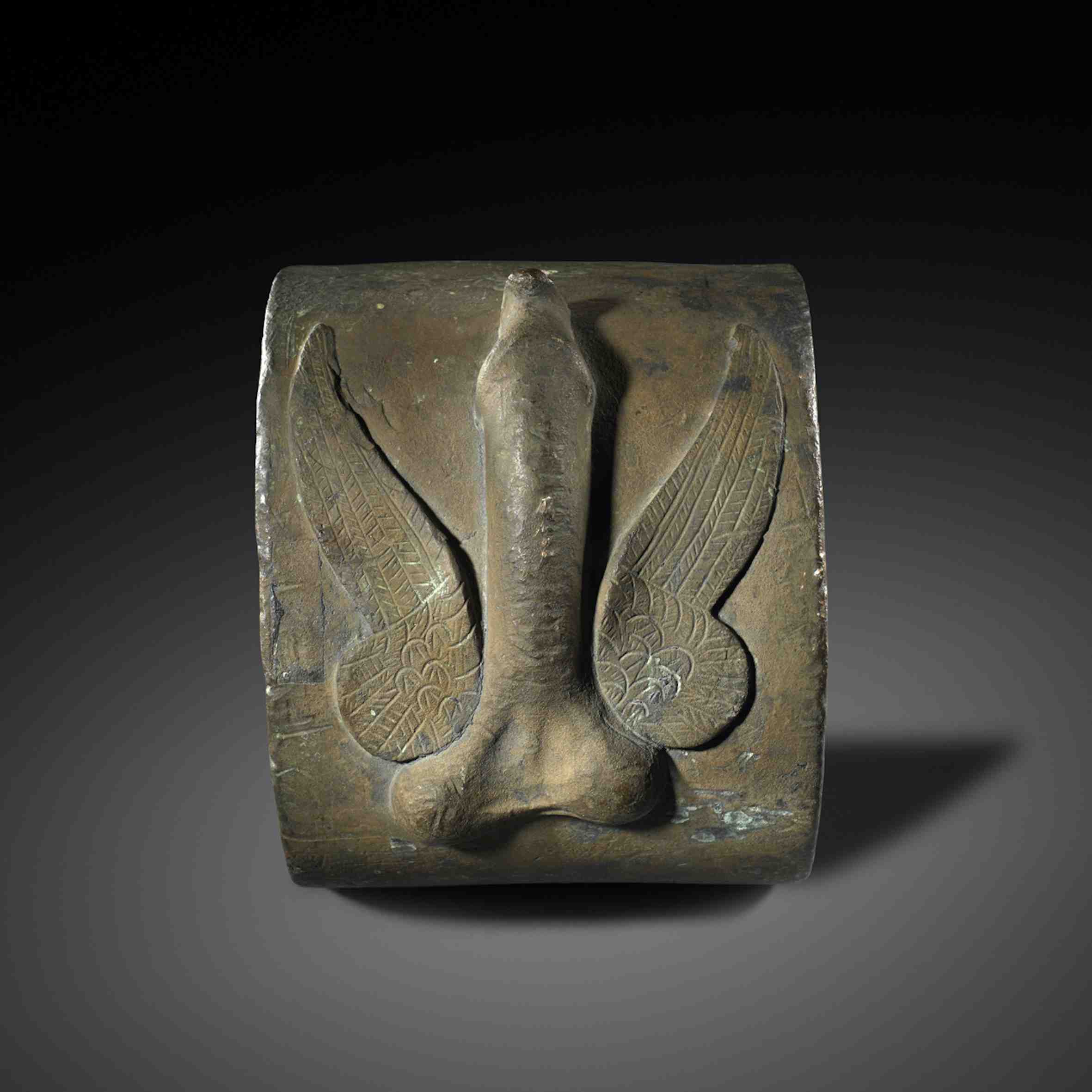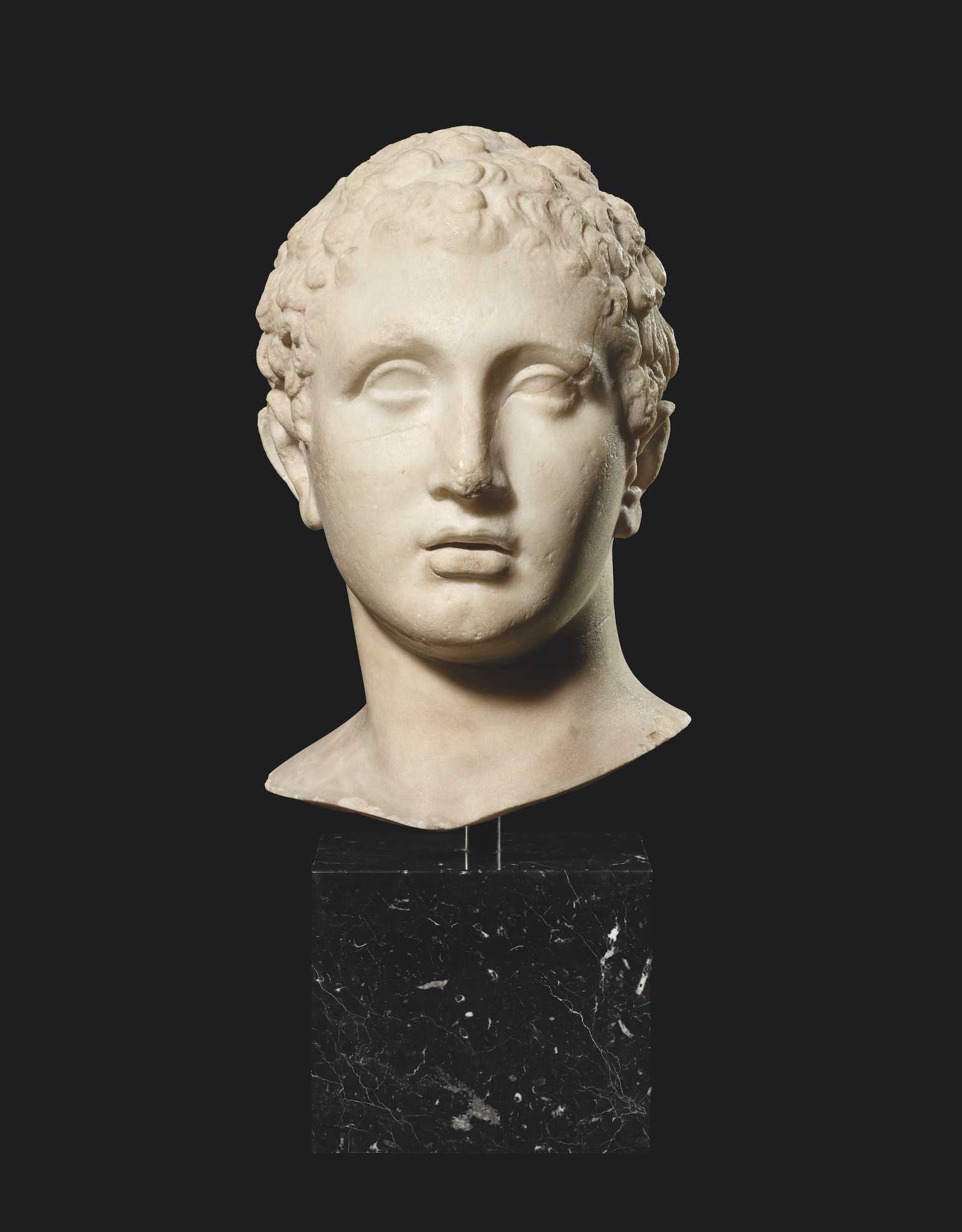The piece is a shallow plate positioned on a short, thick stem with a flat, raised rim in which two suspension holes have been made. The decoration of the plate depicts four profile heads overlapping so that the beard of the first becomes the hair of the second, and so on. A white strip is painted on the black hair and the eye of one of the heads has a small curbed stroke beside its upper eyelid. The four visible ears on each side of the heads, depicted by a small black arc on a reserved background, meet in the centre of the tondo beside the inner ends of the black hair. The ends of the noses protrude beyond the rest of the edges made by the heads. The heads are surrounded by palmettes and scrolls which are enlivened with white dots. Surrounding the tondo is a white laurel-wreath with clusters of dots between the leaves while the rim is decorated with vertical black strokes.
Note
The decoration of a profile head as the main scene on vases is encountered as early as the seventh century BC, though it only becomes prominent in the first half of the fourth century.
Human heads first appeared as a common illustration in fourth century BC Apulia as a subsidiary decorative motif on the necks of volute-kraters by the Iliupersis Painter, and, comparatively infrequently, on the reverses of some of the minor vases connected with his workshop. From the mid-fourth century onward, head scenes occur across a wide range of forms and are found in three distinct contexts: firstly, as secondary decoration on larger pottery vases such as amphorae, louthrophoroi, volute-kraters or Pelikai. Secondly, as the main ornamentation on the reverses of large vases such as kraters, amphorae, pelikai or skyphoi. Finally, they appear as the only decoration on smaller vases of a large variety of shapes, of which the most common are kantharoi, cups, lekanides, squat lekythoi, skyphoi or plates.
This particular plate is an archetypal late Apulian form that is very well represented in the corpus of smaller head vases. From a total of 608 examples, 493 of the plates have heads as their principal decoration. Out of these, most contain only the heads, others have objects alongside such as fans or mirrors, while any form of floral decoration appears notably infrequently. Female heads are by far the most common, but we also encounter those of men, youths, orientals and Dionysiac figures such as Silenus and the satyrs. The identities of the female heads cannot be proven with certainty, however, from their distinct depictions elsewhere in antiquity, we are able to recognise Persephone, Aphrodite, Hera, Nike, Amazons and Medusa.
By contrast, the male heads typically represent mortal men, usually unbearded youths, however, some may also depict Orpheus, Adonis, Attis or Paris. The male heads often have a thick white head-band around them, sometimes with dot-clusters above.
The huge number of conventional head scenes on late Apulian vases demonstrates the remarkably unique personality of this plate’s playful and clever decoration.
